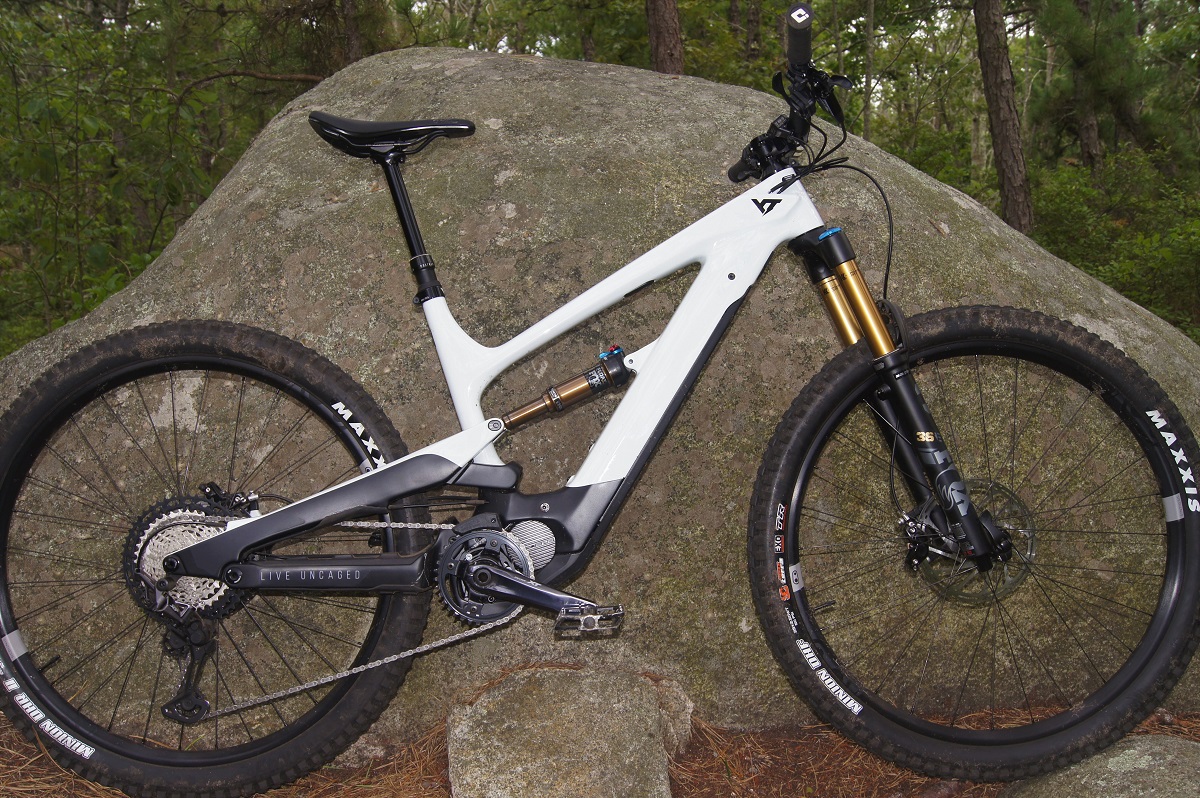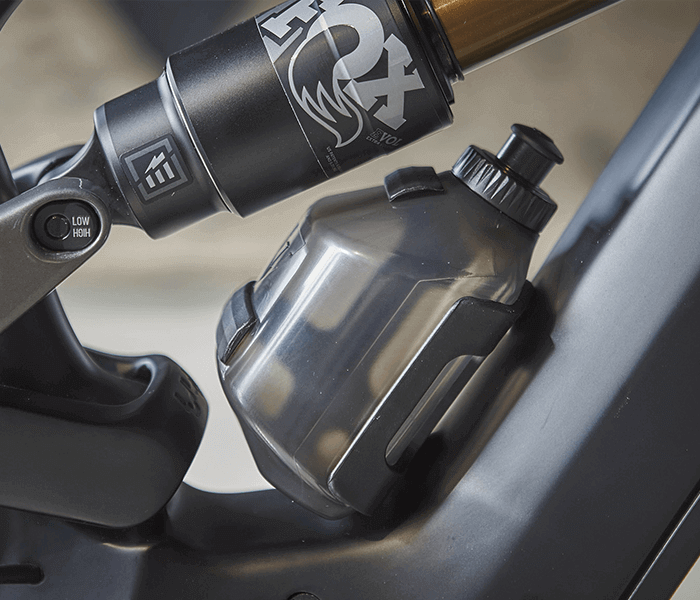Last year YT released its Decoy 29 eMTB, a steeper-angled option to its original e-mullet Decoy first introduced in 2017. The original 29/27.5” Decoy was Enduro focused and branded toward young talented rippers with a tagline about replacing the shuttle. The newest Decoy builds on YT’s experience with e-bikes and is a full 29er designed to be a more all-around performer and for taking fewer fire roads to the top.
YT sent their top-end Decoy 29 Core 4 for review, which has a full carbon frame, XT drivetrain, and Kashima-coated Fox Factory suspension. After several weeks of rocky East Coast trail riding, the 29er Decoy has proven to be a winner. The bike enhances Shimano’s EP8 bionic climbing abilities, without giving up the stable descending traits YT is known for. The high-end components spec has been impressively durable and highlights the upfront value YT can offer as a direct-to-consumer company. Battery size/range and a silly water bottle mount are the only dings to an overall great bike.
Sizing/Geometry
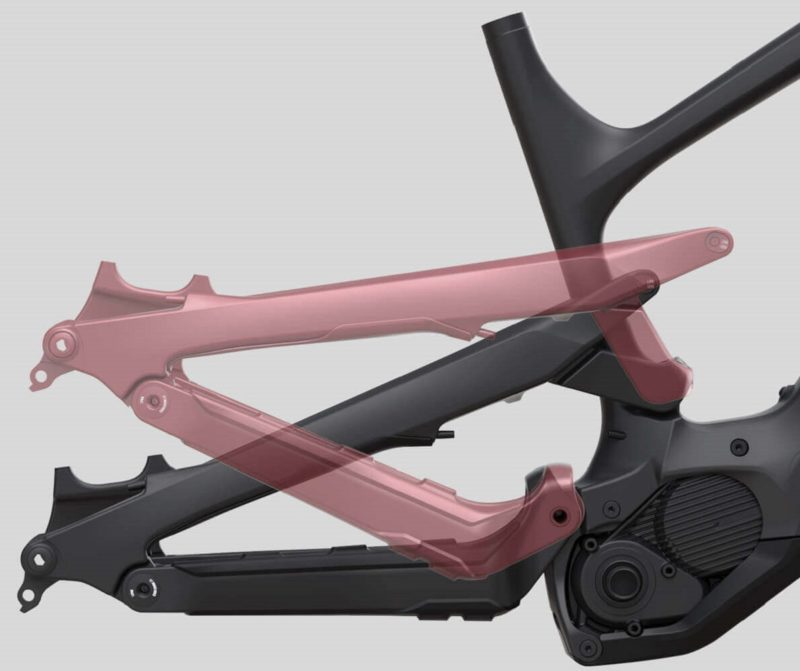
For 2021 the Decoy 29 and Decoy MX both have three Core build packages (Core 2, 3, and 4), and feature Shimano’s new EP8 motor. All three Decoy 29 build packages share the same frame design, using 150/145mm travel (front/rear), and a four-bar Virtual 4 Link (V4L) system. With 5 frame sizes, riders are more likely to fit 2 sizes, so double-check the geometry chart and YT size recommendations. At 5’11”’ I am at the tall end of a YT Large. Normally XL bikes are too big for me, but the Decoy XL was a viable option. I’m glad I picked the size L though since it had enough seatpost and shorter but sufficient reach. It also has a wheelbase longer than my large acoustic Trail bike, so the smaller frame was a better match for the tight and twisty trails I ride most.
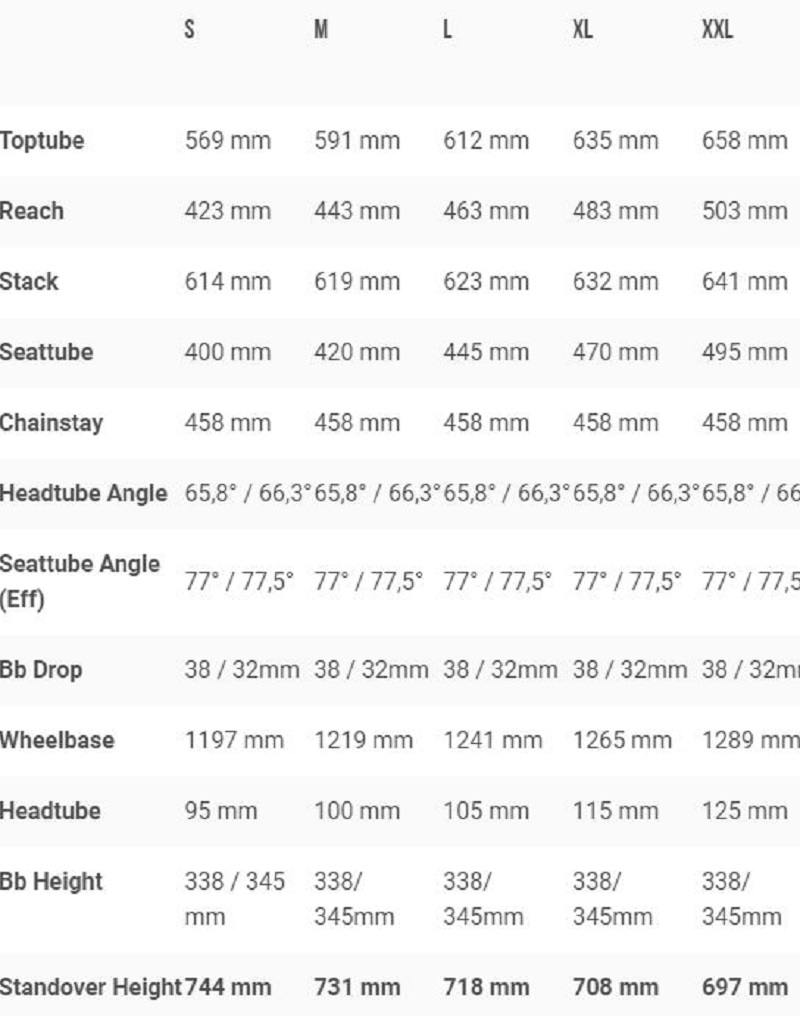
By the numbers, the Decoy 29 clearly has free-solo climbing intentions. A high/low Flip Chip allows 0.5° tuning of head and seat tube angles and a 7mm BB change. Flipped to high, the 77.5° seat angle is remarkably steep, which makes sense for maximizing an e-bike’s motorized climbing abilities by keeping the rider’s weight forward and the front wheel down on steep climbs. An e-bike also needs room for said motor, so the wheelbase and chainstays are relatively long, which is also good for steep ups (note: eMTBs also tend toward low BB height, which has an impact, literally, on pedal clearance and this is discussed more below).
With a wider range of size options, a YT Large sizes up short in Reach (463mm) and Stack (632mm) compared to your average Trail bike and relative to its long Wheelbase (1241mm). But with a low bottom bracket and flippable 65.8° / 66.3° head angle, it has downhill stability baked in too. YT refers to the Decoy 29 as its All-Mountain eMTB, which is appropriate since it blurs Trail and Enduro categories. Overall, given the design constraints of an e-bike, the Decoy 29’s geometry matches its All-Mountain (Trail-duro?) goals.
Core 4 Build
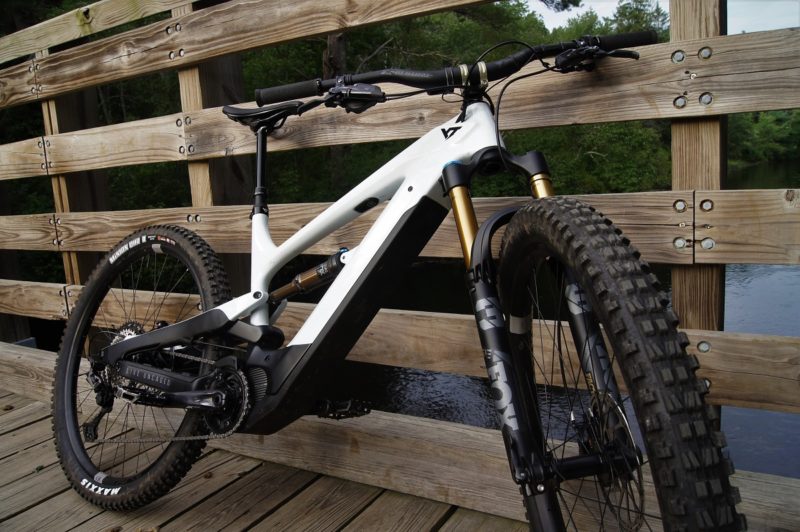
YT’s $7,499 top-end 29 Core 4 has a full carbon frame, while the lower-priced Core 3 and Core 2 use aluminum swingarms. The battery is nicely integrated into the down tube and is easily removed with two through bolts, so there’s no battery rattle and good weight distribution. It’s an improbably sleek-looking frame, considering how big the downtube needs to be to hold the battery and motor. The carbon layup flows more material toward the headtube and other stress points.
The high-end build blings with Kashima golden Fox 36 Float Factory E-bike fork and Float DBS Factory shock; both buttery and highly adjustable. The V4L design works really well even with the extra eMTB weight but doesn’t leave room for a water bottle. YT squeezed in a proprietary nip of a bottle anyway, and the 475ml custom Thirstmaster 2000 half-bottle is equal parts design genius and silly as a $50(!) extra—that does include the bottle and the cage though.
The Crankbrother’s Synthesis Alloy e-MTB wheels are tuned to be front and rear-specific, which didn’t feel any different, but both wheels somehow stayed true despite some very hard e-bike hits. Built with I9 1/1 freehub, and fit with 2.5” Maxxis Minion DHF (front) and 2.4” Minion DHR II (rear), the wheels and tires are holding up amazingly well.
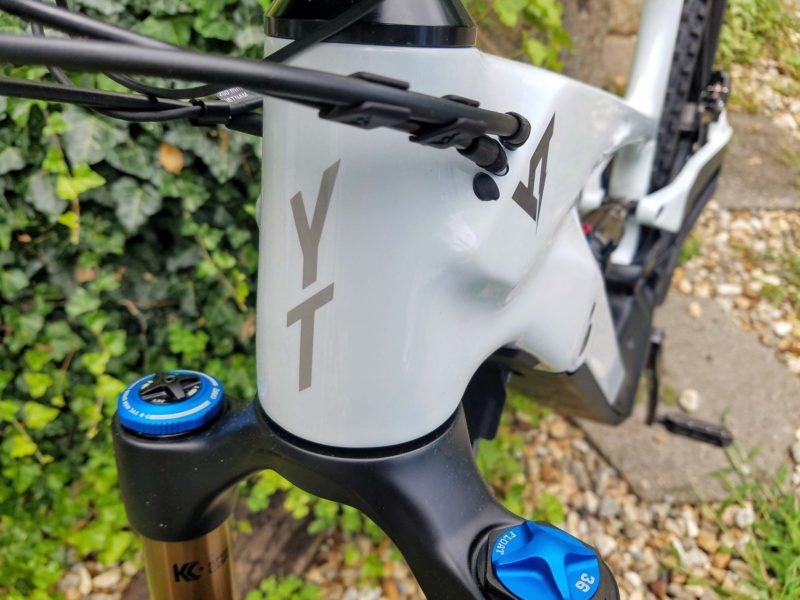
An E13 chainguide and an all XT drivetrain should also help with durability, and the 10-51T 12spd cassette has enough range to climb anything and also quickly hit the 20mph US Class 1 motor restriction. The top-end SRAM Code RSC brakes offer both contact and reach adjustment and are easy to keep dialed in, which is important for stopping the extra weight of an eMTB. The Acros AZX-260 headset has integrated “blocklock” turning limits to save the frame from fork impact in a crash but takes some getting used to because there are a few less degrees of motion for trackstands and tight switchbacks. The remaining spec is also strong and includes a Renthal stem (50mm, +/-6° rise) and bars (780mm Fatbar), YT’s Postman dropper, an SDG Bel Air 3.0 saddle, and ODI grips.
e-Bike Power
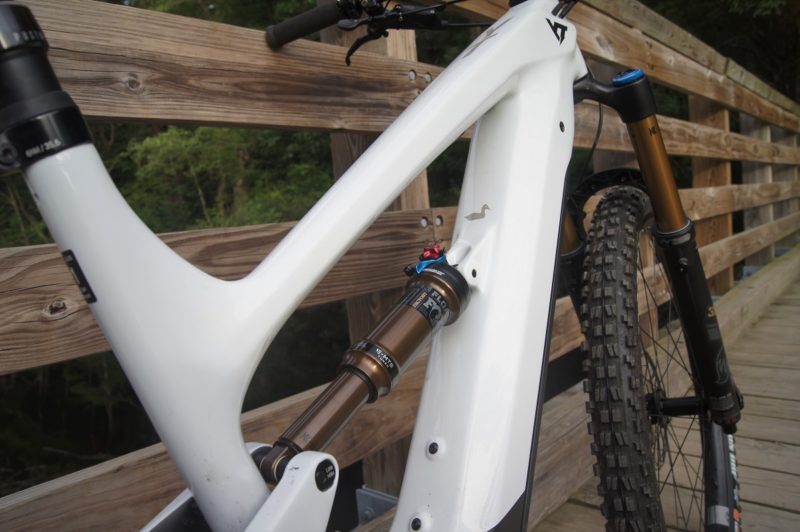
Shimano’s new EP8 motor is matched with YT’s 540W custom battery. The EP8 has 85NM of torque and is noticeably quieter and gives a smoother power response than prior Shimano motors. The power output is very intuitive to pedal input, with seemingly instant power and intuitive proportional feedback. Further tuning is available using Shimano’s E-TUBE Project app. Response timing, power, and max torque can be preset with the app, and be used as the new default or as a backup preference.
With the small E7000 display, very quiet beeps (default setting), and a discrete power button (tucked under the top tube), the Decoy doesn’t scream robo-bike. But it packs plenty of robo-power. Boost mode is typically too much for most tight and twisty trails, and best used for blasting straight uphill, doubletrack, or roads. Overall the EP8 and E7000 display provide an easy to use power system, with clean and ergonomic up/down thumb control for changing power mode and to toggle display adjustments.
There is however a known issue with all EP8’s making a clanking noise while coasting. I didn’t notice it at first, but once I did, I couldn’t stop listening for it. Probably more of a me-issue, as overall it’s a quiet motor, but others have found it a bit annoying too. Another criticism is the range of the 540W battery, where longer-lasting options are available from other bike companies. For me, the battery life was a non-issue, as the general range of 25mi (Boost) to 75mi (Eco) was plenty for my everyday riding. I seldom saw the battery fall below half charge and very rarely used Eco mode to conserve power. For those doing backcountry epics or other all-day riding, there are other e-bikes out there that spec 700W batteries. Or check with YT on availability to buy an extra 540W battery ($699).
Decoy 29 vs. MX
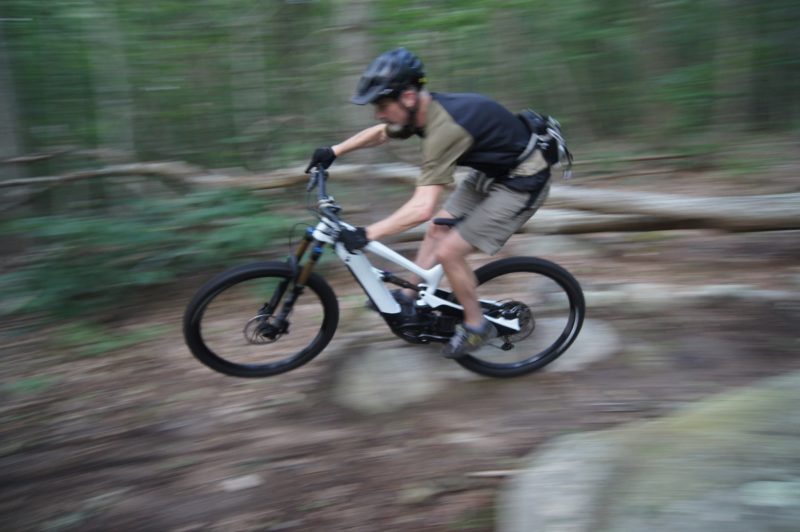
My riding buddy has the 2020 Decoy MX, and we spent a few rides swapping back and forth between the MX and 29 versions of the Decoy. Reach and stack numbers are deceiving when comparing bikes with different wheel and tire sizes, and I was a bit surprised how much more upright the 29er put me compared to the MX. Side by side, both flipped to High, the 29er was clearly taller up front and the riding position felt higher too. So I worried the front wheel would lift on steep climbs, but the 29 handled the crazy-steep e-bike ups noticeably better than the MX (new tires, big back wheel, and longer chainstays all helped too).
Pointed downward, the 29er felt just as fast but a bit harder to manual and hop. What I found surprising was that I preferred the 29er on super steep downhill shoots, where the tall bar gave me less fear of an endo. However, I did get my ass brrramped by the 29’s rear wheel several times when leaning way back, so the advantage likely goes to the MX for having more room to move in the back. In short, the Decoy 29 excels at steep, techy climbs, but still holds its own on flowy descents and steep drops.
Ride Impressions
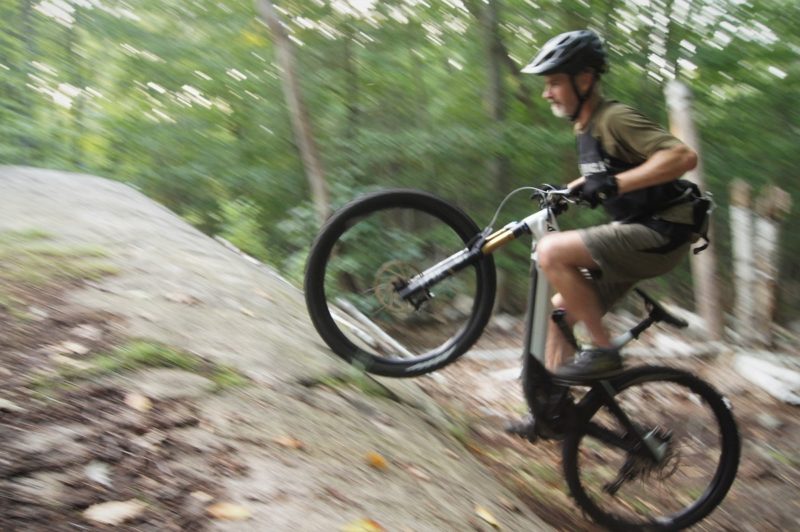
I don’t live near mountains, and most of my rides are local and only rise tens of feet above sea level. My daily riding choices are dominated by steep punchy technical riding (fun), and rooty unflow trails (not as fun). But on an e-bike like the Decoy, even the sloggiest of my home-trails come to life with feature-popping fun. Trail mode was my go-to power porridge. Boost was typically too much for the tight and twisties, and often had me on the brakes or off my line (or off my line and the bike). I’d like to say that instead of Boost that I often toggled into Eco for a better workout, but I only did so occasionally…never.
The Decoy had me in my local woods more often during the week than usual. It also extended my range to hunt for steeper climbs to clean and bigger rollers to drop into. The super-smooth and progressive 150/145mm Fox suspension also had me hitting stunts which I would typically b-line on my personal Trail bike. For example, there’s a nearby stream crossing jump which I had always bypassed to avoid the hard landing to flat. It was easy to session on the Decoy and I now have this jump/drop dialed in. The bike has been a constant siren song, calling out to me to sneak in a fast loop during lunch break or any free time. I could get in a full workout by hammering the whole ride, or scooch up to a higher power preset and keep fresh legs for an evening family hike or surf session. Not to say I didn’t get a workout every ride. While my legs could take a noticeable break on short rides, the higher speeds always gave the rest of my body a workout. My little cyclist arms are getting pumped.
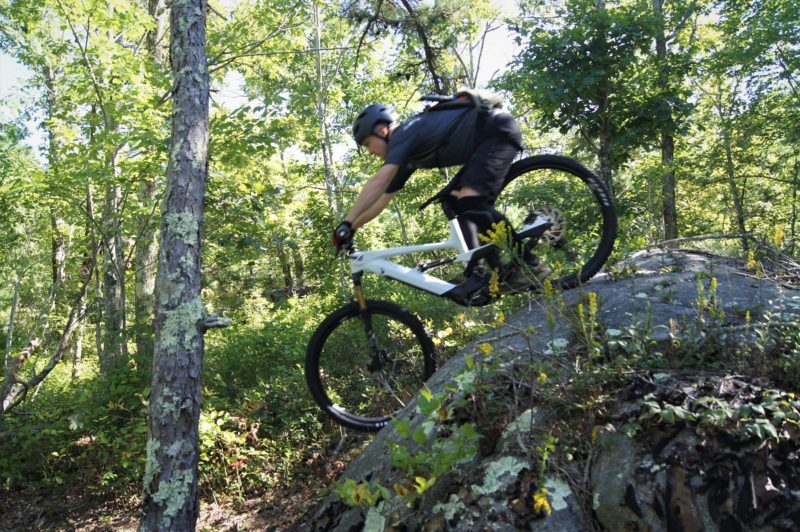
Weekend day trips to more flowy trails highlighted the Decoy’s do-it-all nature. Pumping flow trails and popping jumps felt great, despite the e-bike weight and less aggressive geometry. Cornering and suspension felt even better, where the extra weight seemed to help rail turns even in loose conditions. Confidence and speeds on flowy trails were both high, with a lot more Boost usage, and the Eco setting remained largely ignored. The longer weekend rides underscored the comfy riding position but did raise the occasional concern of battery range. However, after 25 miles I was almost always ready for the barn before the Decoy and never ran low enough to need to switch to Eco for any significant time.
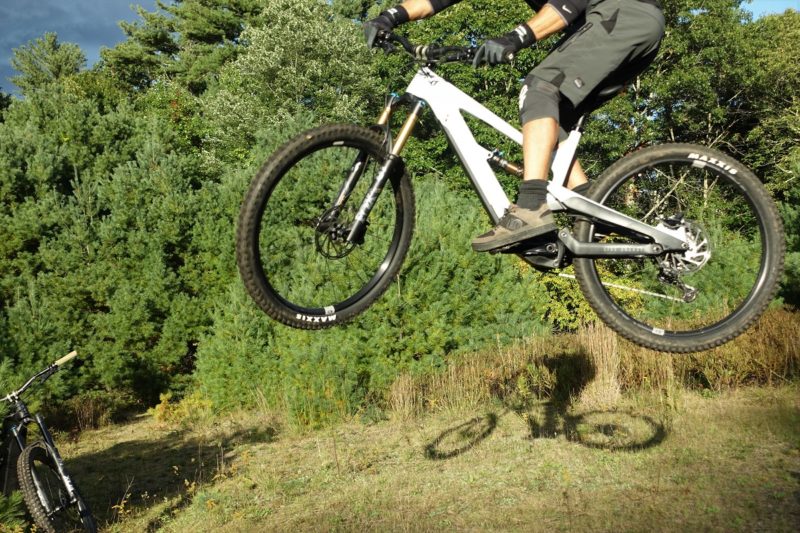
YT sells direct to riders, and the Core 4 packs a strong spec as expected with its $7,499 price. All three Decoys use the EP8 motor and share the same integrated and intuitive zippy power. The Core 4 held up well to several weeks of hard technical riding including some good-sized drops and a few jump sessions. The only casualties were warped brake rotors and a cracked skid plate (both easily replaced/fixed). Riding fast and sloppy is when I break bike parts, and this was my default riding style while getting used to the Decoy and overusing Boost mode. It’s a testament to the XT drivetrain that I didn’t snap a chain or fold any teeth, and to the overall quality of the frame, Crankbrother’s wheels, and remaining spec. The bike was riding like brand new throughout testing.
What does it weigh?
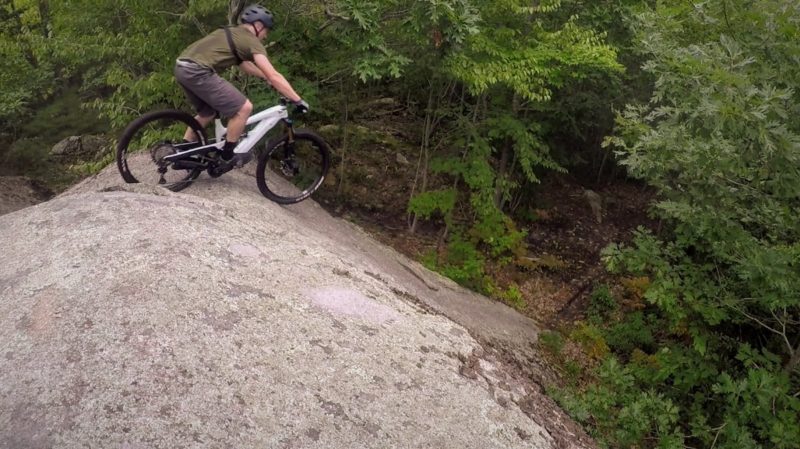
How much does it weigh? This is the first question everyone asks. The size Large weighed in at 49.4lbs without pedals, and with pedals went over my bike scale’s 50lb limit. Heavy for putting on top of a car, or lifting over a fence. But if you’ve read this far, you don’t need to be convinced that e-bikes are faster and super fun, and worth the weight penalty. They are also inherently low-slung, so the low bottom bracket took some getting used to on rocky tech trails. Even with the flip chip set to High and 165mm cranks, pedal strikes were frequent and often bone-jarring. I’d consider replacing with even shorter cranks and recommend rubber endcaps, and pedals with replaceable grip pins. The motor often had me hung up on big logs, briefly stuck like a boneheaded boater that missed the tide change. So overall the Decoy required some changes in my riding style to compensate for the low clearance, but it also changed my perspective on what is possible to climb on a bike. I loved the amazing climbing ability, silky suspension, and downhill stability. I cleared climbs I had always thought to be downhill only and hit wall rides and other stunts I often b-line. The Decoy 29 is a great all-mountain bike, which takes full advantage of Shimano’s EP8 motor and the extra person’s worth of smooth power.
Overall the Decoy 29 Core 4 is a well-designed high-end e-bike with a good value spec. The bike shipped with a clever box and clear instructions that made assembly very easy. It also included a “toolbox” with torque and pedal wrenches, a shock pump, and extras like carbon paste and tubeless valves. I’m sure with some tinkering the Decoy MX would also work great on my local trails, but out of the box, the Decoy 29 was the right tool for my everyday riding. I can’t overstate the joy of leaning into an uphill berm or clearing previously impossible climbs. I mostly ride an acoustic Trail bike, and I found the switch to the Decoy to be intuitive. And its zip and added suspension gave me the confidence to add new stunts to my resume. It checks all the boxes for a quality All-Mountain eMTB and added a lot of extra miles and smiles to my week.
